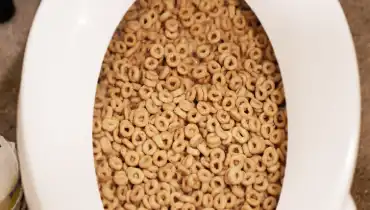Just how do you actually feel on the subject of Think Twice Before Flushing Food Down Your Toilet?

Introduction
Lots of people are commonly faced with the dilemma of what to do with food waste, especially when it comes to leftovers or scraps. One typical inquiry that develops is whether it's fine to flush food down the bathroom. In this article, we'll look into the reasons that individuals may consider purging food, the consequences of doing so, and different techniques for appropriate disposal.
Reasons why individuals might think about purging food
Absence of understanding
Some people might not understand the possible damage caused by purging food down the toilet. They might incorrectly think that it's a harmless technique.
Benefit
Purging food down the bathroom might look like a fast and simple remedy to taking care of undesirable scraps, particularly when there's no nearby trash bin readily available.
Idleness
In some cases, individuals may merely pick to flush food out of large negligence, without considering the repercussions of their activities.
Consequences of flushing food down the commode
Environmental effect
Food waste that winds up in waterways can add to air pollution and harm marine communities. In addition, the water used to flush food can stress water resources.
Pipes problems
Purging food can result in stopped up pipelines and drains pipes, creating pricey pipes repair services and aggravations.
Kinds of food that should not be purged
Coarse foods
Foods with fibrous appearances such as celery or corn husks can obtain tangled in pipes and create clogs.
Starchy foods
Starchy foods like pasta and rice can absorb water and swell, resulting in clogs in pipelines.
Oils and fats
Greasy foods like bacon or food preparation oils need to never ever be purged down the bathroom as they can solidify and create clogs.
Correct disposal techniques for food waste
Using a waste disposal unit
For homes furnished with waste disposal unit, food scraps can be ground up and flushed through the plumbing system. However, not all foods are suitable for disposal in this way.
Recycling
Particular food product packaging products can be recycled, decreasing waste and minimizing ecological impact.
Composting
Composting is an environmentally friendly means to take care of food waste. Organic materials can be composted and utilized to enrich soil for horticulture.
The value of correct waste administration
Lowering environmental harm
Proper waste monitoring techniques, such as composting and recycling, aid lessen pollution and maintain natural deposits for future generations.
Safeguarding plumbing systems
By staying clear of the practice of flushing food down the bathroom, home owners can avoid pricey plumbing repair work and maintain the stability of their pipes systems.
Verdict
Finally, while it may be appealing to purge food down the commode for convenience, it is necessary to comprehend the potential repercussions of this action. By embracing appropriate waste administration methods and getting rid of food waste sensibly, individuals can contribute to healthier pipes systems and a cleaner environment for all.
FLUSH FOOD DOWN THE TOILET?
FLUSHING FOOD CAN CAUSE BLOCKED DRAINS IN YOUR HOME
All of the plumbing fixtures in your home are connected to the same sewer pipe outside of your home. This outdoor sewer pipe is responsible for transporting all the wastewater from your home to the Council sewer mains. Even small pieces of food that go down the kitchen sink can cause problems for your sewer. It should therefore be obvious that flushing larger bits of food, such as meat, risks a clog in either the toilet itself or the sewer pipes. Flushing greasy food is even more problematic because oil coagulates when it cools, coating the interior lining of your pipes.
THE TOILET IS NOT A BIN
Food isn’t the only thing that people shouldn’t be flushing down the toilet. People use the toilet to dispose of all kinds of things such as tampons, makeup wipes, dental floss, kitty litter and even underwear. Water goes to great lengths to educate residents about the high costs and stress placed on wastewater treatment systems simply from people flushing the wrong stuff down the toilet. It costs taxpayers millions of dollars each year, and homeowners thousands in blocked drain repairs.
FLUSHING FOOD IS A WASTE OF WATER
Flushing food is a waste of our most precious resource - water. In June this year Level 1 water restrictions were introduced to protect water supply from drought conditions. Much of New South Wales continues to be affected by prolonged drought with recent figures revealing up to 97 per cent of the state remains in drought. Depending on whether you have a single or dual flush toilet, every single flush uses between five and 11 litres of water. In the current climate this is a huge amount of water to be wasting on flushing food that should be placed in the bin (or better yet, the compost).
https://www.jabplumbingsolutions.com.au/blog/can-you-flush-food-down-the-toilet

We were shown that editorial about from a friend on a different web address. Those who appreciated our page kindly make sure you remember to share it. Many thanks for being here. Revisit us soon.
Check This Out